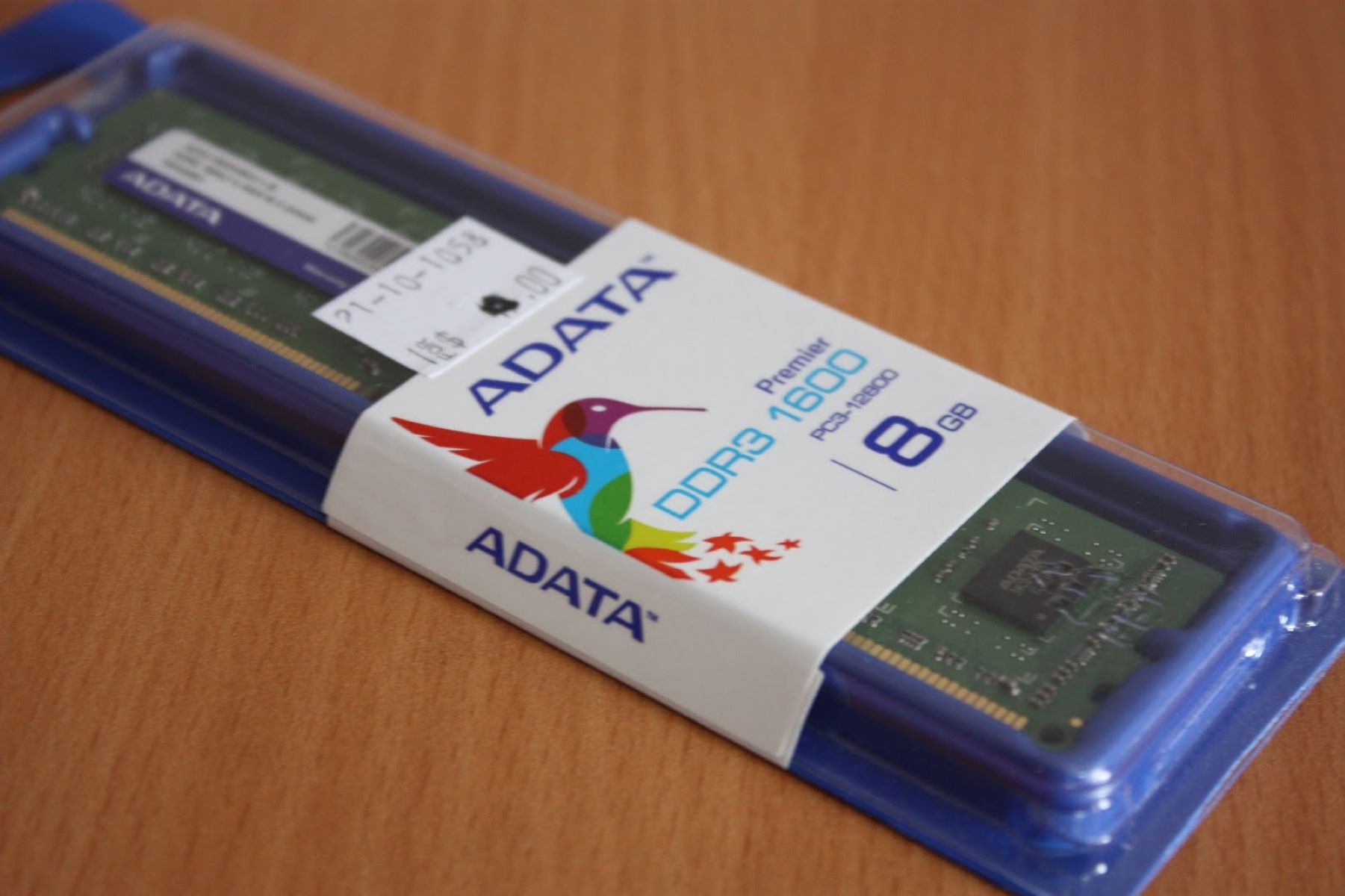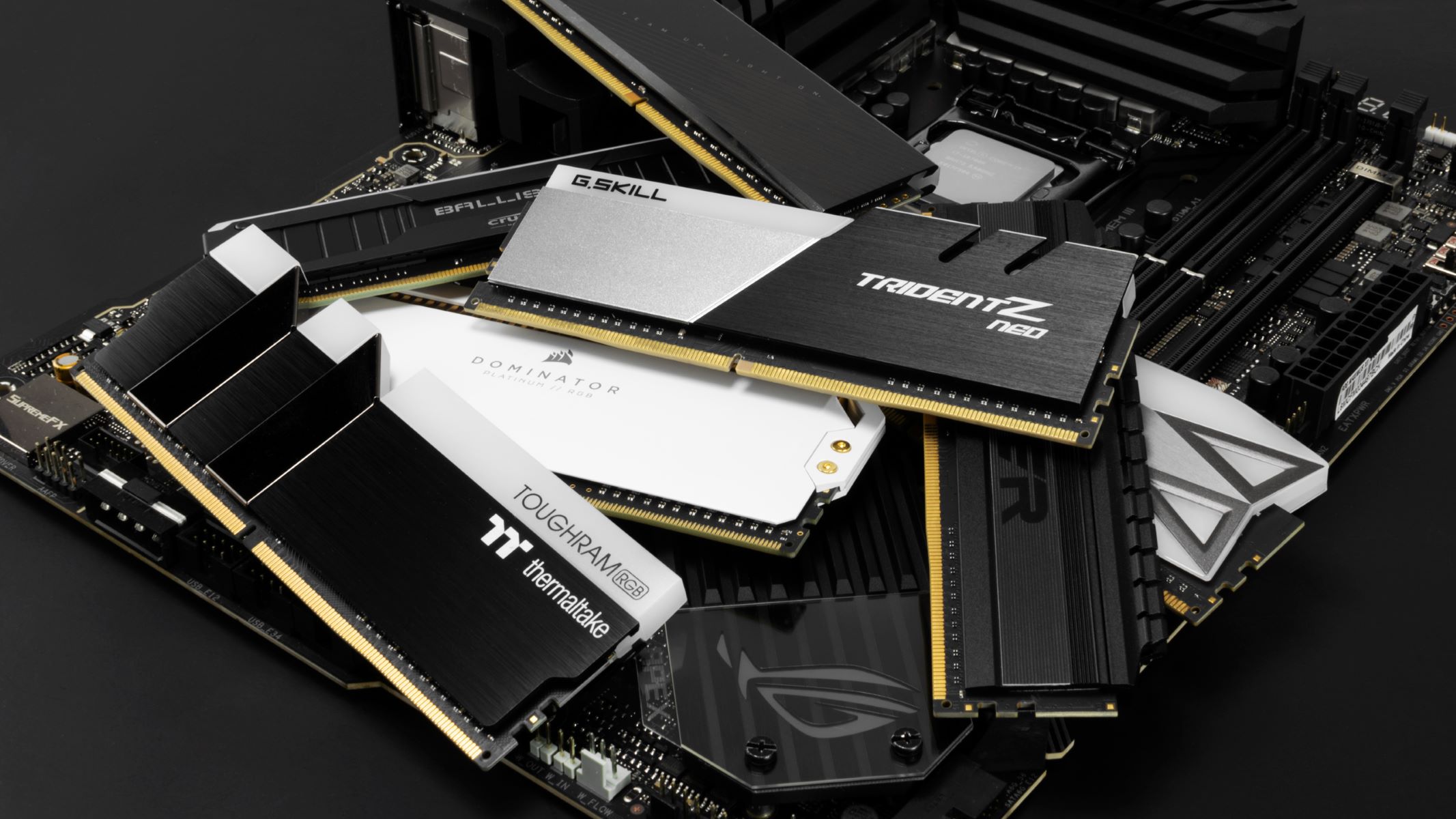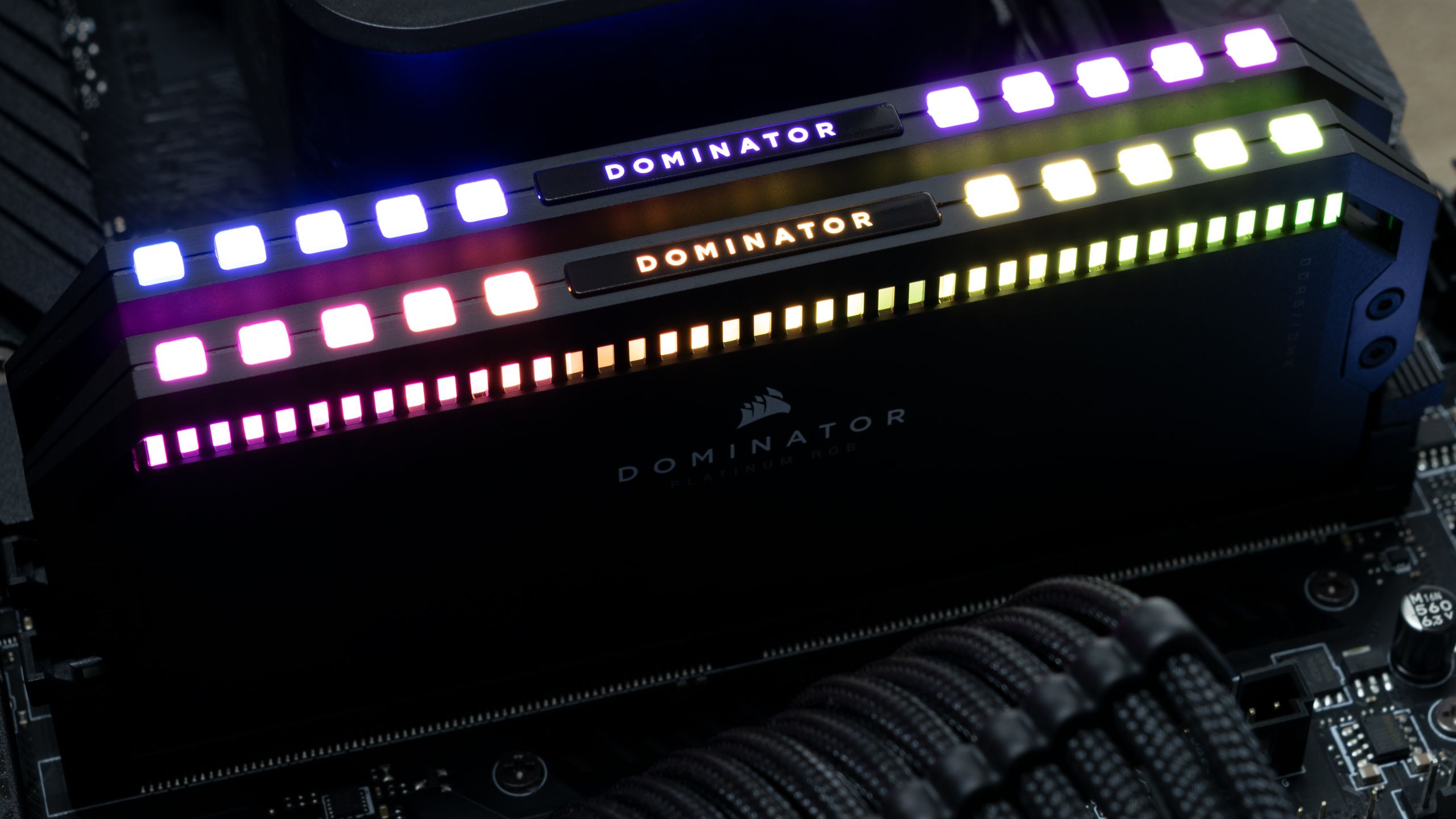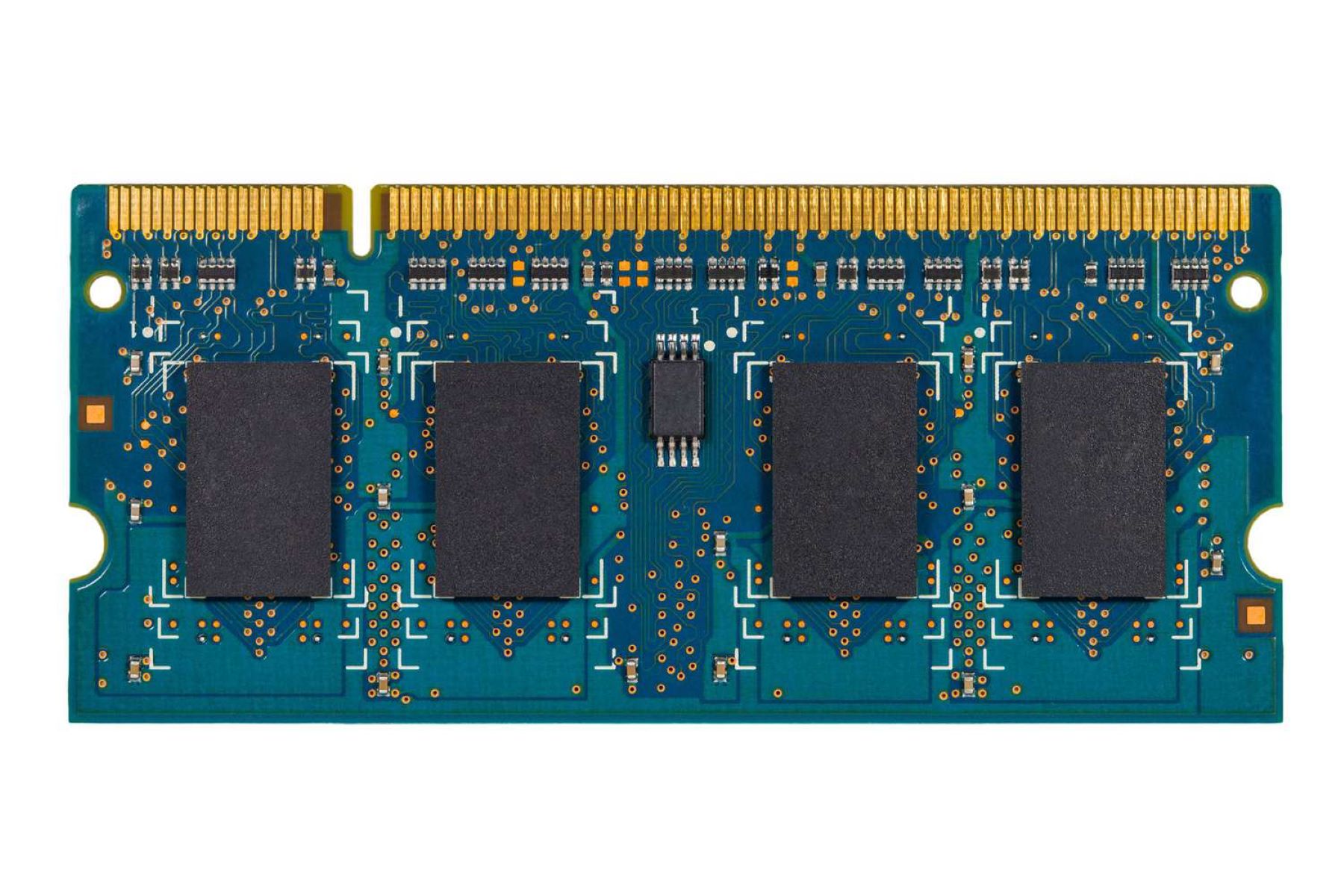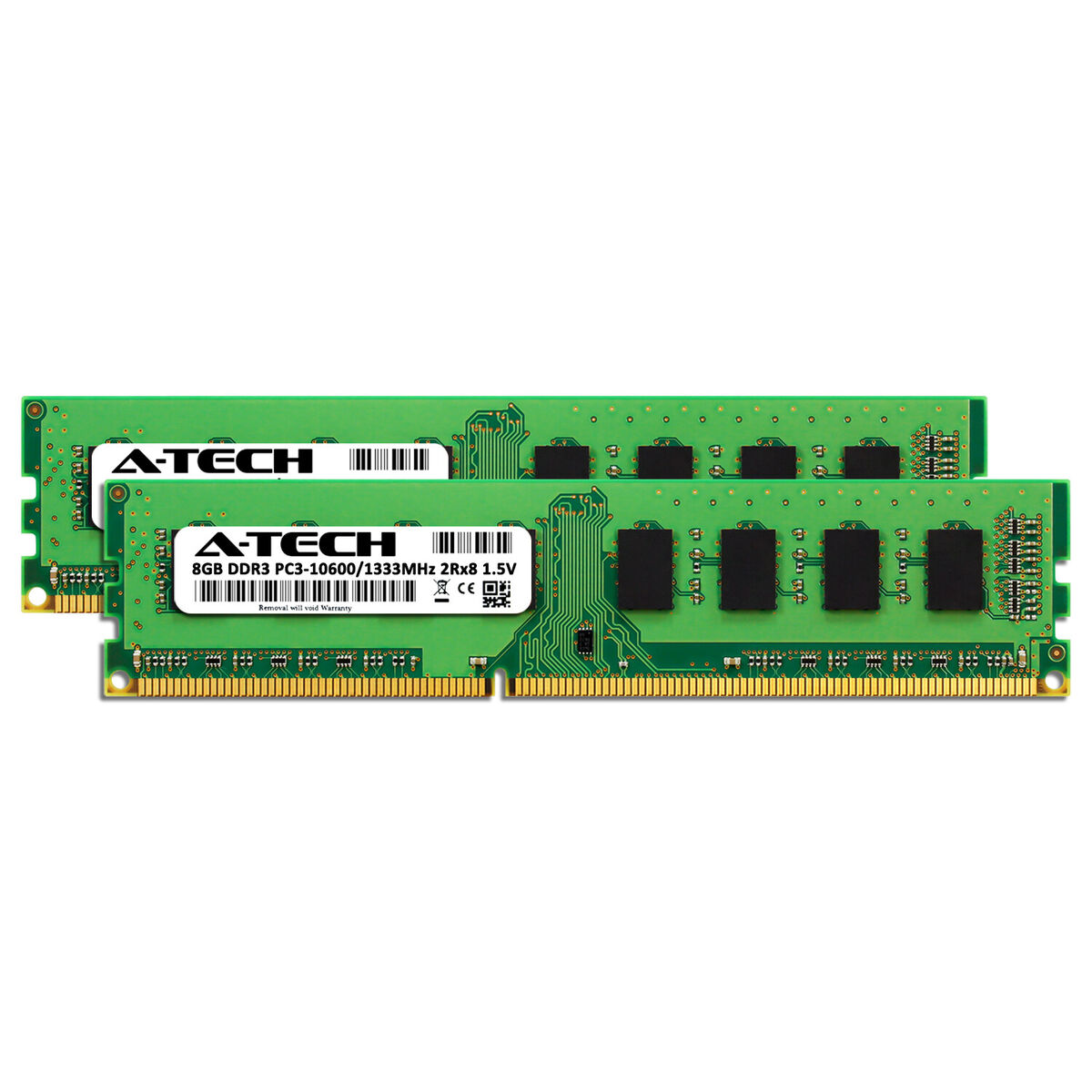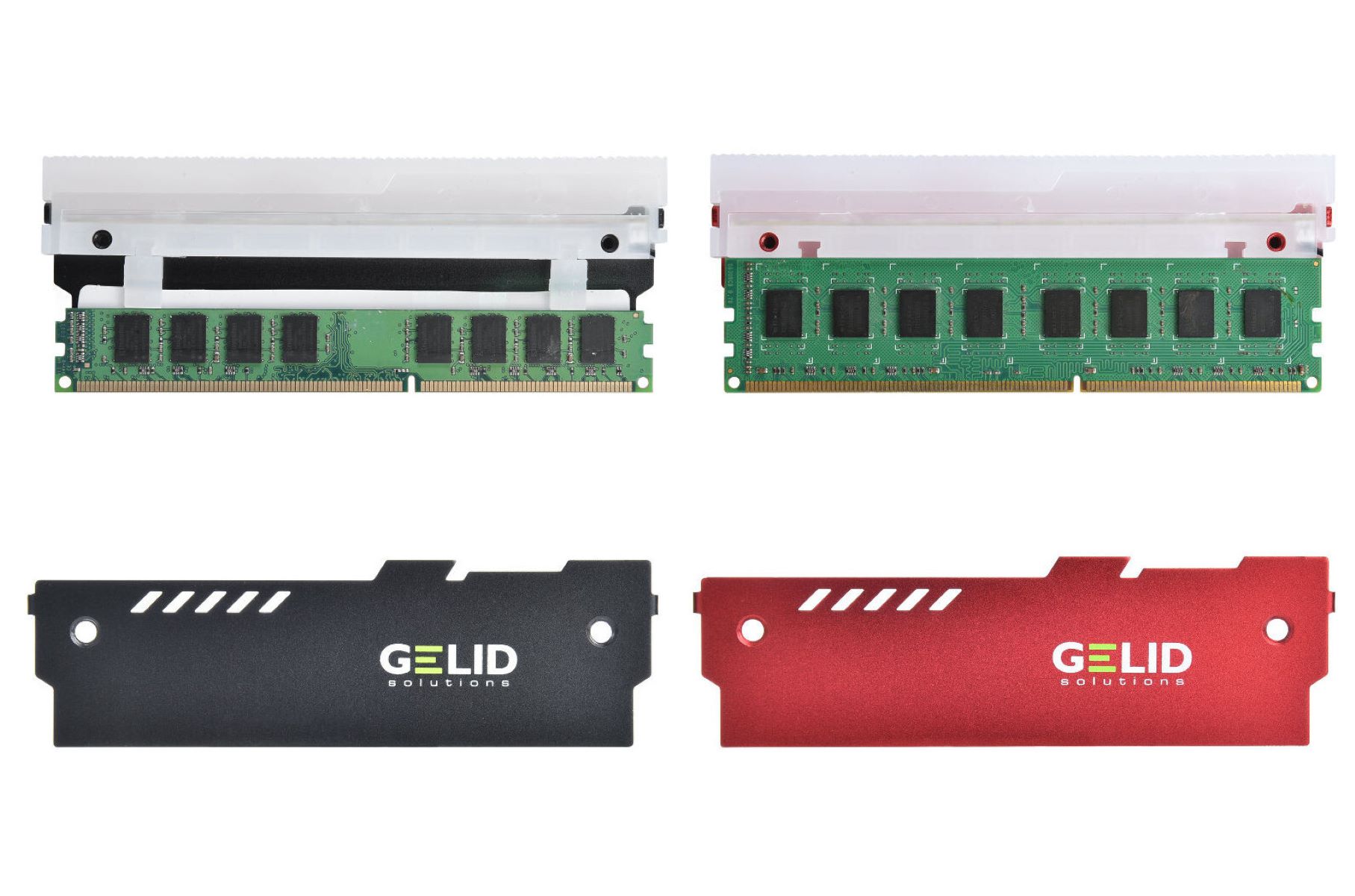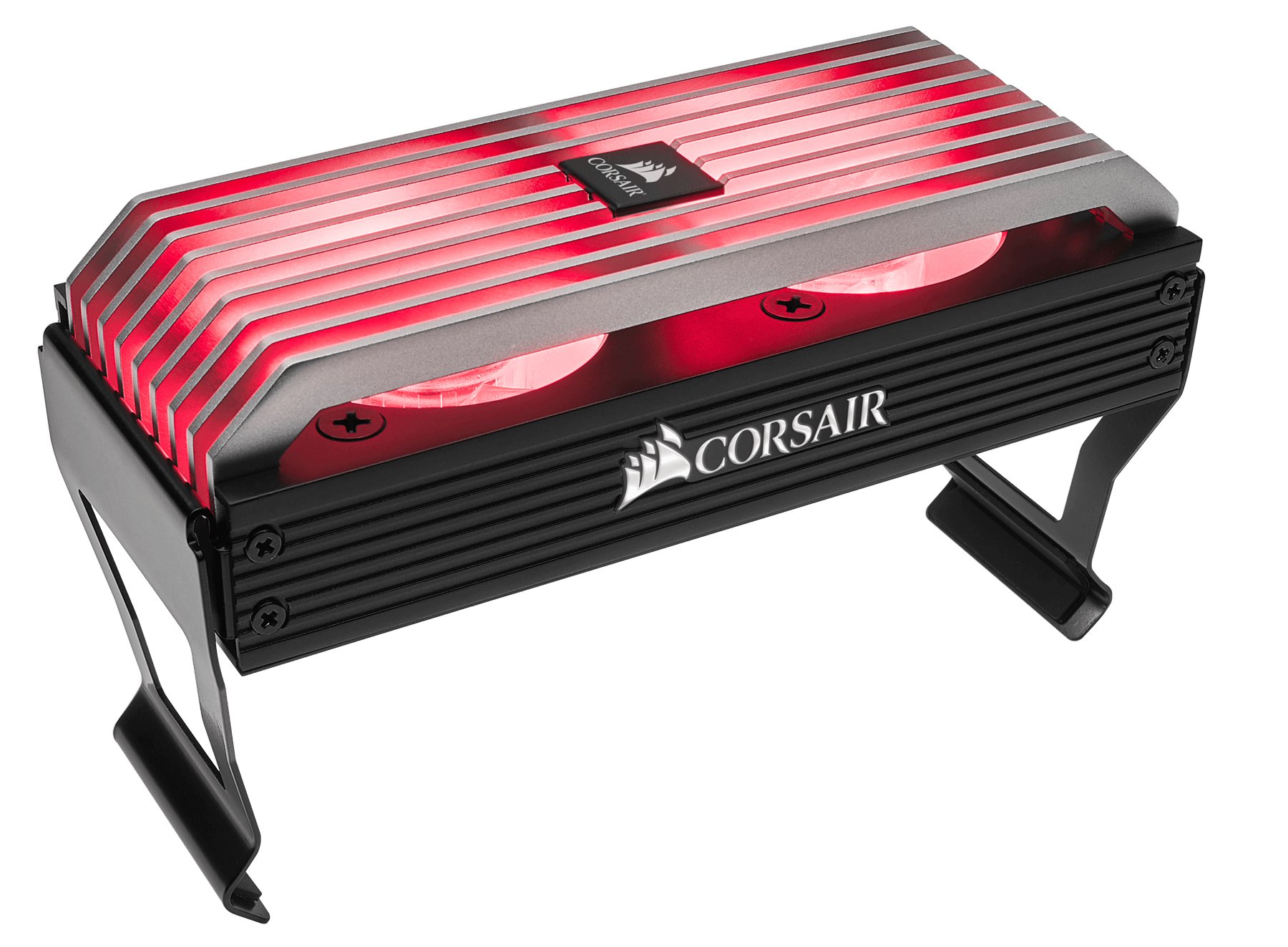Introduction
Welcome to our article on the topic of RAM (Random Access Memory) and its role in a computer. In this digital age, computers have become an integral part of our lives, from personal use to business operations. One of the most crucial components of a computer is RAM, playing a vital role in its performance and functionality.
When it comes to understanding how a computer works, RAM is an essential concept to grasp. Whether you’re a tech-savvy enthusiast or just curious about how your computer functions, this article will provide you with valuable insights into the world of RAM.
RAM can seem like a complex subject, but fear not – we will break it down into simple terms and cover all the essential aspects. By the end of this article, you will have a clear understanding of what RAM is, how it works, why it is important, and how much RAM you may need for your specific requirements.
Additionally, we will explore different types of RAM available in the market and discuss how you can upgrade your existing RAM to enhance your computer’s performance. We will also provide some valuable tips for optimizing RAM usage to ensure efficient and smooth operation.
So, whether you’re a casual computer user or a seasoned professional, let’s dive into the fascinating world of RAM and explore its significance in the world of computing.
What is RAM?
RAM, which stands for Random Access Memory, is a type of computer memory that is responsible for temporarily storing data that the computer actively uses. It is a key component of a computer’s overall memory hierarchy, alongside other storage devices like hard drives or solid-state drives. Unlike these storage devices, RAM provides fast and temporary storage that allows the computer’s processor to quickly access and manipulate data.
Think of RAM as the computer’s workspace. When you open programs, load files, or perform tasks on your computer, the data is loaded into RAM for quick access. This allows for faster retrieval and processing of data compared to reading it directly from a hard drive or other storage medium.
RAM is a volatile form of memory, meaning that its contents are erased when the computer is powered off or restarted. This is why it is sometimes referred to as “temporary memory.” While RAM is crucial for a computer’s performance, it is not meant for long-term storage of data. Instead, it acts as a temporary storage area for data that the computer needs to access and manipulate quickly.
The size of the RAM determines how much data can be stored and accessed by the computer at any given time. RAM is measured in units of bytes, with common sizes ranging from gigabytes (GB) to terabytes (TB). The more RAM a computer has, the more data it can store and access simultaneously, resulting in a smoother and more efficient computing experience.
Furthermore, the speed at which RAM can transfer data, often referred to as the memory’s clock speed, also affects its performance. The higher the clock speed, the faster the RAM can transfer data to and from the computer’s processor.
In summary, RAM is a type of temporary memory that enables a computer to quickly store and access data. It serves as a crucial component for a computer’s performance, allowing for faster data retrieval and processing. While RAM provides temporary storage, it is not meant for long-term data storage and is erased when the computer is powered off or restarted.
How Does RAM Work?
To understand how RAM works, let’s take a closer look at its structure and function. RAM consists of small, electronic circuits that are made up of millions or even billions of memory cells. Each memory cell is capable of storing a single bit of information, either a 0 or a 1, using electrical signals.
These memory cells are organized into rows and columns, forming a grid-like structure. Each row and column intersection is called a memory address, and it serves as a unique identifier for a specific memory cell.
When the computer needs to access or store data in RAM, it first identifies the memory address where the data is to be read from or written to. The computer sends an electrical signal to the specific memory address, activating the memory cell at that location.
Once activated, the memory cell either stores or retrieves data by switching its electrical state. A state change from 0 to 1 represents storing data, while a change from 1 to 0 represents retrieving data. These state changes happen at an incredibly fast speed, enabling the computer to access and manipulate data quickly.
One of the key features of RAM is its random access capability, which allows the computer to access any memory cell directly, regardless of its physical location in the memory grid. This is different from sequential access memory, such as hard drives, where data has to be read or written in a specific order.
While RAM adds speed to data access and retrieval, it has a downside: volatility. As mentioned earlier, RAM is a volatile form of memory, meaning that its contents are lost when the computer loses power. To ensure data integrity, the computer regularly saves important information from RAM to long-term storage, such as the hard drive, in a process known as memory swapping.
In summary, RAM operates by utilizing electronic circuits with millions or billions of memory cells. Each memory cell stores a bit of information by switching its electrical state. The computer can access any memory cell directly, enabling fast data access. However, RAM is volatile, and its contents are lost when the computer loses power.
Why is RAM Important?
RAM plays a critical role in a computer’s performance and overall functionality. Here are some key reasons why RAM is important:
1. Speed and Performance: RAM significantly impacts the speed and performance of a computer. When you run programs or perform tasks, the related data is loaded into RAM for quick access by the processor. The more RAM you have, the more data can be loaded and accessed simultaneously, resulting in faster and smoother operations.
2. Multitasking and Efficiency: RAM allows you to multitask efficiently. With ample RAM, you can have multiple programs running simultaneously without experiencing a slowdown in performance. Each program can have its data residing in RAM, ready to be quickly accessed when needed.
3. Gaming and Graphics: If you’re into gaming or graphic-intensive tasks, having sufficient RAM is crucial. Games and graphic design software often require large amounts of RAM to run smoothly, as they need to store and process sizable amounts of data during gameplay or graphic rendering.
4. Virtual Memory: In addition to physical RAM, computers utilize virtual memory, which is a portion of the hard drive designated to act as additional memory. When RAM becomes limited, the computer automatically uses virtual memory to store data, albeit at a slower speed. Having more RAM reduces reliance on virtual memory, resulting in faster and more efficient performance.
5. System Stability: Inadequate RAM can lead to system instability and crashes, particularly when you run memory-demanding software or have several intensive tasks running simultaneously. Insufficient RAM may cause the computer to run out of memory, resulting in slow performance or freezing applications.
6. Future-Proofing: As software and operating systems continue to evolve, the demands for RAM tend to increase. Having ample RAM ensures that your computer can handle future updates and newer software versions without experiencing significant performance issues.
7. Overall User Experience: The amount of RAM affects your overall user experience. Whether you’re browsing the web, editing documents, streaming videos, or engaging in any other computer-related activities, having enough RAM ensures a smooth and responsive experience, allowing you to work and enjoy your computer without frustrating slowdowns or delays.
Overall, RAM is a critical component that directly impacts a computer’s performance, multitasking capability, stability, and overall user experience. Investing in sufficient RAM can significantly enhance your computer’s speed, efficiency, and ability to handle resource-intensive tasks.
How Much RAM Do You Need?
Determining the right amount of RAM for your computer depends on several factors, such as your intended usage, the operating system you’re running, and the types of applications you use. While there is no one-size-fits-all answer, here are some guidelines to help you determine how much RAM you need:
1. Basic Usage: If you mainly use your computer for browsing the web, checking emails, and working with office applications like word processors or spreadsheets, 4GB to 8GB of RAM should be sufficient. This amount of RAM can handle everyday tasks without any significant performance issues.
2. Multitasking: If you frequently have multiple applications open simultaneously or work with memory-intensive software, such as video editing or virtual machines, consider upgrading to 16GB or even 32GB of RAM. This higher amount of RAM allows for smoother multitasking and better performance with demanding applications.
3. Gaming and Graphics: Gamers and those who engage in graphic-intensive tasks, such as 3D modeling or video rendering, may require even more RAM. Ideally, aim for 16GB to 32GB of RAM to ensure optimal performance and no lag during gameplay or resource-intensive graphic tasks.
4. Operating System Requirements: Different operating systems have varying RAM requirements. For example, Windows 10 recommends 4GB of RAM for 64-bit systems, but for better performance, 8GB or more is recommended. macOS also benefits from having at least 8GB of RAM, while Linux distributions often require less RAM due to their lightweight nature.
5. Future-Proofing: If you plan to keep your computer for several years or anticipate using more demanding software in the future, it’s advisable to opt for more RAM than you currently need. This way, your computer will be able to handle future updates and software advancements without becoming outdated.
Remember that adding more RAM to your computer may require checking if your system’s motherboard supports higher capacities and the type of RAM your system uses (e.g., DDR3 or DDR4). It’s also worth noting that while increasing RAM can improve performance, it may not always be the sole factor affecting overall system speed. Other components, such as the processor and storage, also play a significant role.
In summary, the amount of RAM you need depends on your specific usage and requirements. For basic tasks and casual use, 4GB to 8GB of RAM should suffice. If you engage in multitasking, gaming, or memory-intensive tasks, consider upgrading to 16GB or more. Taking into account your operating system’s recommendations and future-proofing needs will help ensure a smooth and efficient computing experience.
Types of RAM
There are several types of RAM available in the market, each with its unique characteristics and compatibility. Understanding the different types can help you make informed decisions when it comes to upgrading or replacing your computer’s memory. The most common types of RAM include:
1. DDR4 (Double Data Rate 4): DDR4 is the most recent and widely used RAM type in modern computers. It offers improved performance and efficiency compared to its predecessor, DDR3. DDR4 RAM modules have higher clock speeds, lower power consumption, and increased data transfer rates, resulting in faster overall system performance.
2. DDR3 (Double Data Rate 3): DDR3 was the standard RAM type for many years before DDR4 became prevalent. DDR3 modules are still found in older systems and can offer decent performance for basic computing needs. However, DDR3 RAM generally has lower clock speeds and slower data transfer rates compared to DDR4.
3. DDR2 (Double Data Rate 2): DDR2 RAM was popular in computers from the mid-2000s but has become outdated. It has slower data transfer rates and higher power consumption compared to DDR3 and DDR4. While DDR2 may still be found in older systems, it is not recommended for modern computing needs due to its limited performance potential.
4. DDR (Double Data Rate): DDR RAM was the predecessor to DDR2 and is now obsolete. It has much slower transfer rates and lower capacities compared to the later generations of RAM. DDR RAM is no longer supported by current systems and is not suitable for modern computing requirements.
5. SDRAM (Synchronous Dynamic Random-Access Memory): SDRAM is an older type of RAM that was commonly used in computers during the late 1990s and early 2000s. It offers relatively slower performance compared to DDR and DDR2 RAM. SDRAM is now considered outdated and incompatible with modern systems.
6. RDRAM (Rambus DRAM): RDRAM was a proprietary type of RAM developed by Rambus Inc. It was mainly used in high-end computer systems in the late 1990s and early 2000s. However, due to its high cost and compatibility issues, RDRAM is no longer in use in today’s computers.
7. ECC (Error-Correcting Code) RAM: ECC RAM is a type of RAM that incorporates additional error-correcting capabilities. It is commonly used in servers and workstations where data integrity and system stability are critical. ECC RAM is more expensive than non-ECC RAM and is not necessary for most consumer-grade computers.
When upgrading or replacing your RAM, it is crucial to ensure compatibility with your system’s motherboard and processor. Check the specifications of your computer and refer to the manufacturer’s guidelines to determine which type of RAM is compatible with your system.
In summary, DDR4 is the most prevalent and current type of RAM, offering the best performance and efficiency. DDR3 is still found in older systems and can serve basic computing needs. DDR2, DDR, and SDRAM are outdated and should be avoided for modern computing. RDRAM is obsolete and no longer used. ECC RAM is suitable for server and workstation environments. Ensure compatibility with your system when choosing a RAM type for upgrades or replacements.
Upgrading Your RAM
If your computer is running slow or struggling to handle your workload, upgrading your RAM can be a cost-effective solution to improve its performance. Here are some steps to follow when upgrading your RAM:
1. Determine Compatibility: Check your computer’s documentation or specifications to determine the type and maximum capacity of RAM supported by your motherboard. This will ensure that the new RAM you purchase is compatible and can be installed without issues.
2. Identify Available Slots: Open your computer’s case and locate the RAM slots on the motherboard. Take note of any empty slots and the configuration of existing RAM modules. This will help you determine how many additional RAM modules you can install and in what arrangement.
3. Purchase the Right RAM Modules: When buying new RAM modules, ensure they match the specifications of your motherboard and the existing RAM modules. Pay attention to factors like the RAM type (e.g., DDR4), speed, and capacity. It’s best to buy RAM from reputable manufacturers to ensure quality and compatibility.
4. Install the RAM: Before installing the RAM modules, ensure your computer is powered off and unplugged. Gently insert the RAM module into an available slot, ensuring that the notches on the module align with the slot’s keys. Apply equal pressure to both ends of the module until it clicks into place. Repeat the process for any additional modules.
5. Power on and Verify: Once the new RAM modules are installed, close your computer’s case and power it on. The computer should recognize the new RAM during the boot-up process. To verify that the RAM upgrade was successful, you can check the system properties or use diagnostic software to confirm the increased amount of RAM.
6. Test Performance: After upgrading the RAM, test your computer’s performance with your typical workload. You should notice improved multitasking, faster program loading times, and better overall system responsiveness. If you encounter any issues, double-check the installation and ensure that the RAM modules are firmly seated in their slots.
7. Consider Professional Assistance: If you’re unsure about the installation process or want expert guidance, consider seeking professional assistance. Computer technicians can help ensure a smooth RAM upgrade and address any compatibility or installation concerns.
Upgrading your RAM can provide a significant boost to your computer’s performance, but it’s essential to consider other hardware and software factors as well. For example, upgrading the RAM alone may not solve all performance issues if the processor or storage are outdated or slow. Evaluating your system as a whole and identifying potential bottlenecks will help you make informed decisions about upgrading other components if necessary.
Remember to handle RAM modules with care, store them in an antistatic bag when not in use, and always follow proper safety measures when working with computer hardware.
In summary, upgrading your RAM involves determining compatibility, purchasing the right RAM modules, installing them correctly, and verifying the upgrade. Ensure compatibility, handle RAM with care, and consider other hardware factors when upgrading your computer’s RAM to enhance its performance.
Additional Tips for Optimizing RAM Usage
While upgrading your RAM can significantly improve your computer’s performance, there are also several ways to optimize your existing RAM usage. By implementing these tips, you can ensure that your computer operates efficiently and maximizes the available memory:
1. Close Unnecessary Programs and Processes: Be mindful of the number of programs and processes running in the background. Closing unnecessary ones frees up RAM and allows more resources to be allocated to the applications you’re actively using.
2. Manage Startup Programs: Review and manage the programs that launch automatically when you start your computer. Disable any non-essential programs from launching at startup. This helps minimize the amount of RAM being used right from the beginning.
3. Clear Temporary Files and Cache: Regularly clear temporary files, internet cache, and other unnecessary data that accumulates on your computer. These files can take up valuable disk space and RAM. Built-in disk cleanup utilities or third-party software can assist with this process.
4. Optimize Virtual Memory Settings: Adjusting virtual memory settings can help optimize RAM usage. It allows your computer to use part of the hard drive as additional virtual memory when RAM is limited. However, keep in mind that relying too heavily on virtual memory can impact overall system performance.
5. Update Drivers and Software: Ensure that your computer’s drivers and software are up to date. Updated drivers often include performance improvements and bug fixes that can help optimize RAM usage. Similarly, keeping your applications updated ensures that they are optimized for efficient memory usage.
6. Adjust Visual Effects: Windows and other operating systems offer visual effects that enhance the user interface but consume RAM resources. Adjusting these visual effects or opting for a more basic theme can free up valuable RAM for other tasks.
7. Avoid Running Memory-Intensive Applications Simultaneously: Be mindful of running multiple memory-intensive applications simultaneously. Tasks such as running virtual machines, video editing, or gaming can quickly consume a large portion of available RAM. Consider closing unnecessary applications while engaging in such resource-intensive tasks.
8. Manage Browser Extensions and Tabs: Browsers can consume a significant amount of RAM, especially when you have numerous tabs open or have installed numerous extensions. Limit the number of open tabs and disable or remove unnecessary browser extensions to conserve RAM usage.
9. Perform Regular System Maintenance: Regularly perform system maintenance tasks, including disk cleanup, defragmentation, and malware scanning. These tasks help optimize your system’s performance and ensure efficient RAM usage.
10. Consider Increasing RAM Capacity: If you consistently find that your RAM usage is near its maximum capacity, despite optimizing usage, it may be time to consider upgrading your RAM to a higher capacity. This allows your computer to handle more demanding tasks and applications without slowing down.
By implementing these tips, you can make the most of your existing RAM and improve your computer’s overall performance. Remember to regularly assess your RAM usage and adjust your system settings accordingly to ensure optimal resource allocation.
In summary, optimizing RAM usage involves closing unnecessary programs, managing startup applications, clearing temporary files, adjusting virtual memory settings, updating drivers and software, adjusting visual effects, avoiding memory-intensive tasks, managing browser extensions and tabs, performing regular system maintenance, and considering increasing RAM capacity if necessary.
Conclusion
RAM plays a vital role in the performance and functionality of a computer. It acts as the temporary workspace where data is stored and accessed by the processor. By understanding what RAM is, how it works, and its importance, you can make informed decisions regarding your computer’s memory needs.
We explored the different types of RAM available, such as DDR4, DDR3, DDR2, and SDRAM, highlighting the advancements in speed, efficiency, and capacity. When upgrading a computer’s RAM, it is essential to consider compatibility with the motherboard and the specific requirements of your usage.
Additionally, we discussed various ways to optimize RAM usage, including closing unnecessary programs, managing startup applications, clearing temporary files, and adjusting virtual memory settings. These tips can help you make the most of your existing RAM and optimize system performance.
Remember, while upgrading RAM can offer a noticeable improvement in performance, it is only one component contributing to overall system speed. Factors such as processor capability, storage type and speed, and software optimization also influence a computer’s performance.
By understanding the role of RAM and implementing best practices for its utilization, you can ensure a smooth and efficient computing experience. Whether you’re a casual user or a power user engaged in memory-intensive tasks, having the right amount of RAM and effectively managing its usage will enhance your productivity and enjoyment of your computer.
So, take the time to assess your computer’s memory needs, consider upgrading if necessary, and optimize your RAM usage to make the most of your computing experience.









